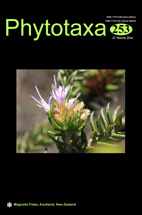Abstract
Giovanni Casaretto (1810–1879) was appointed by King Charles Albert of Savoy-Carignano, Kingdom of Sardinia (now part of Italy), as the botanist and mineralogist of a planned circumnavigation of the globe. The royal frigate La Regina left Genoa on 8 November 1838, arrived at the Island of São Sebastião (State of São Paulo, Brazil) in January 1839, and then stopped at the Island of Santa Catarina (Brazil) and Montevideo (Uruguay), where Casaretto made considerable collections. From Montevideo the frigate sailed towards the Malvinas/Falkland Islands, however, due to a terrible sea storm, was badly damaged and returned to Rio de Janeiro for repair. From the end of April to December 1839 Casaretto collected in Rio de Janeiro and surroundings, and also bought about 100 collections made by Riedel in the “provinces” (now states) of Rio de Janeiro, São Paulo and Minas Gerais, and about 500 collections made by Clausen in Minas Gerais. Due to the precarious conditions, the frigate started her return, with two stops in Salvador (Bahia) and Recife (Pernambuco), where Casaretto gathered botanical specimens, arriving at Genoa in May 1840. He organized his herbarium into 162 bundles, with 3,007 collections corresponding to 13,667 specimens from Brazil and Uruguay, and 122 collections corresponding to 477 specimens from Gibraltar. He numbered his collections in consecutive numerical order, although with several inconsistencies; therefore, Casaretto’s numbers are not collection numbers, but are herbarium numbers. In his Decades he described 100 new species from Brazil (98 spp.) and Uruguay (2 spp.). An analysis of the letters that he sent to Giuseppe Moris showed that the dates written on the first page of each Decas do not correspond to the real publication dates. Casaretto’s concise biography is presented, the voyage of La Regina is described and illustrated, and collection dates, localities, Casaretto’s herbarium numbers and plant groups are summarized in a table. Specific epithets dedicated to him, and Casaretto’s unpublished names either published in synonymy under other taxa or validly published by other authors are presented and discussed.

